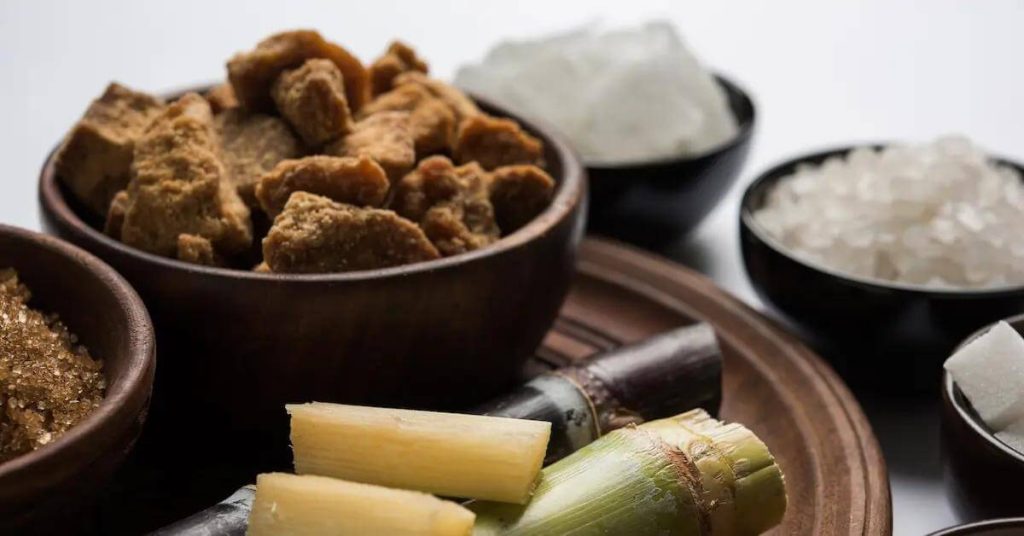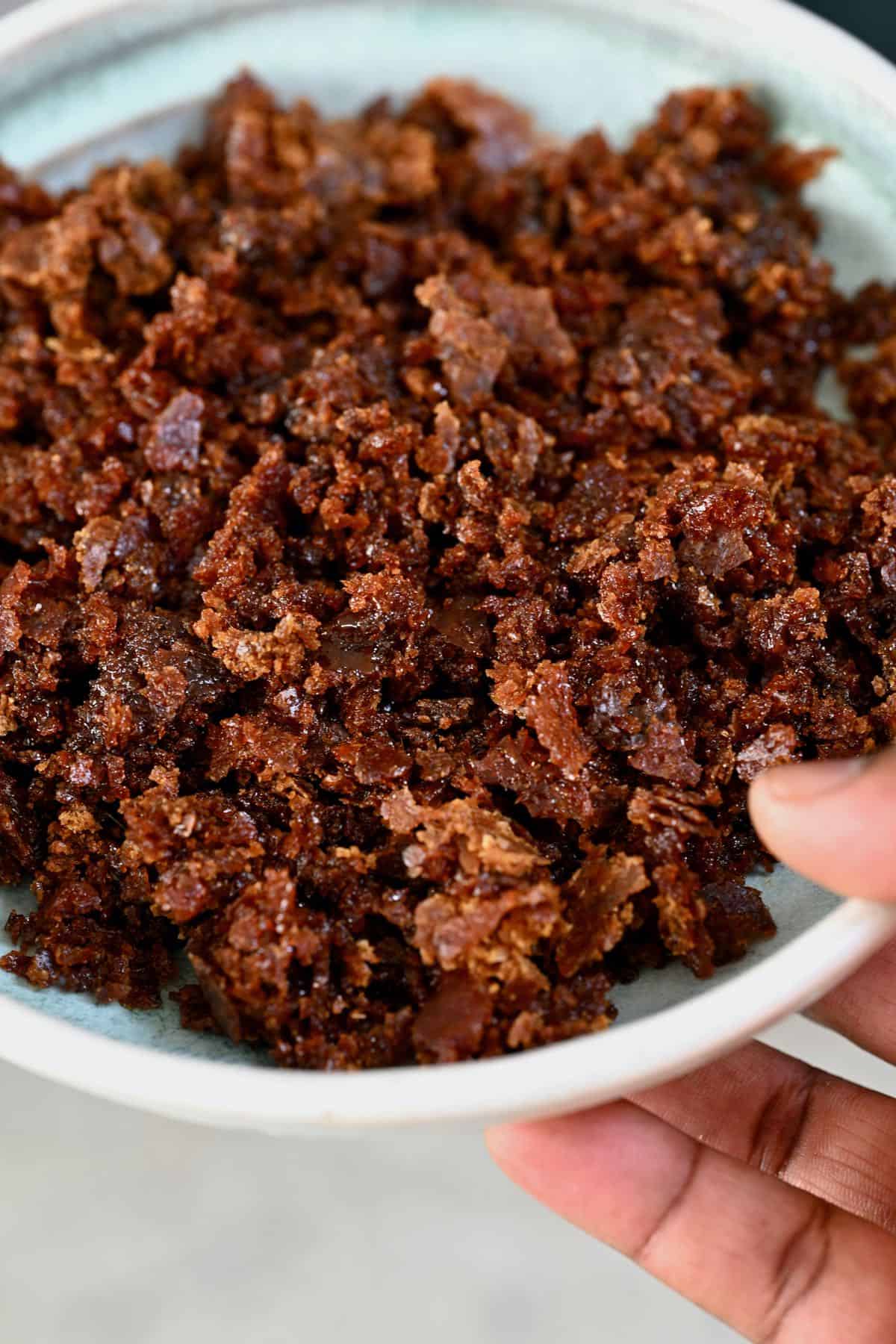The Journey of Cane Sugar Processing: From Harvest to Crystals
The Journey of Cane Sugar Processing: From Harvest to Crystals
Blog Article
A Comprehensive Overview to the Environmental Effect and Sustainability Practices in Walking Stick Sugar Handling
The ecological impact of walking cane sugar processing provides an intricate array of challenges that warrant mindful exam. From dirt destruction and too much water usage to the carbon impact associated with farming and manufacturing, the repercussions of traditional techniques are significant. What particular techniques can be applied to strike an equilibrium in between productivity and ecological stewardship?
Introduction of Walking Stick Sugar Handling
Cane sugar handling involves a series of systematic actions that change sugarcane right into refined sugar. At first, gathered sugarcane is delivered to refining facilities, where it undertakes cleaning to remove dirt and particles. Following this, the cane is squashed to draw out juice, which is then made clear by eliminating impurities through home heating and the addition of lime.
The clarified juice undertakes dissipation, where water is eliminated to concentrate the sugar web content. These crystals are divided from the remaining syrup making use of centrifugation, resulting in raw sugar.
The end product is then dried and packaged for circulation. Throughout this whole procedure, keeping performance and quality assurance is necessary to guarantee the sugar fulfills industry criteria. Each step in walking stick sugar handling not just adds to the end product but likewise has implications for resource usage and waste generation, setting the phase for discussions on sustainability and ecological effects connected with sugar production.
Environmental Difficulties of Production
The manufacturing of walking stick sugar offers a number of significant environmental difficulties that warrant focus. One key worry is the substantial usage of agrochemicals, consisting of fertilizers and chemicals, which can bring about dirt destruction, biodiversity loss, and contamination of regional water sources. The runoff from sugarcane areas frequently lugs these chemicals into close-by ecological communities, disrupting water life and impacting the wellness of areas reliant on these water bodies.
Another difficulty is the high power consumption related to sugarcane processing. The boiling and refining phases call for substantial heat, primarily produced by shedding nonrenewable fuel sources, adding to greenhouse gas exhausts. Furthermore, the large acreage needed for sugarcane growing can result in deforestation and habitat destruction, more intensifying climate modification and threatening wildlife.
In addition, the labor methods in some regions increase moral problems, as employees might encounter poor working conditions and inadequate earnings. This situation typically bolsters a cycle of poverty in neighborhood areas. Cane Sugar Processing. Dealing with these environmental obstacles is critical for creating more lasting techniques in walking stick sugar production, inevitably benefiting both the setting and the neighborhoods associated with this market
Water and Land Use Influence
Water sources and land application are essential parts in the walking stick sugar sector that considerably influence the setting. The cultivation of sugarcane requires considerable water input, with price quotes suggesting that it can consume approximately 2,000 litres of water per kg of sugar generated. This extensive usage of water usually brings about depletion of neighborhood water resources, influencing not just the sugarcane ranches but additionally surrounding environments and neighborhoods that depend on the exact same water sources for farming and residential usage.

Additionally, land use for sugarcane farming can result in deforestation and the conversion of all-natural environments into monoculture haciendas. This method reduces biodiversity, disrupts local ecological communities, and adds to dirt destruction. The growth of sugarcane fields commonly encroaches on useful agricultural land, creating competition for resources in between food and biofuel manufacturing.
Lasting techniques, such as maximizing irrigation strategies and applying crop rotation, are necessary to mitigate these impacts. By embracing more effective water use and land monitoring strategies, the walking cane sugar industry can reduce its environmental impact, making certain a balance between agricultural productivity and environmental conservation.
Greenhouse Gas Emissions
Greenhouse gas emissions represent a considerable ecological problem within the cane sugar handling sector, especially as farming practices increase to satisfy worldwide need. The growing of sugarcane, a plant that grows in tropical environments, relies heavily on artificial plant foods and pesticides, which add to nitrous oxide exhausts. Furthermore, land-use modifications, consisting of deforestation for brand-new sugarcane vineyards, release co2 kept in vegetation and dirt.
Throughout processing, energy usage is an additional significant source of greenhouse gas discharges - Cane Sugar Processing. Numerous sugar mills use fossil fuels to power machinery and create heat, resulting in substantial carbon footprints. In addition, the transportation of raw sugarcane and completed products adds layers of discharges via gas combustion in vehicles
The advancing impact of these exhausts aggravates climate change, presenting threats not only to the atmosphere however likewise to the long-lasting stability of the market. Stakeholders must recognize the urgent requirement for comprehensive approaches that attend to these emissions. This involves examining current agricultural techniques, refining techniques, and transport systems to identify areas for enhancement and visit this page mitigation. Dealing with greenhouse gas emissions is crucial for fostering an extra lasting walking stick sugar market in a changing climate.

Lasting Practices and Innovations
Sustainable methods and developments are significantly crucial in the cane sugar handling market as stakeholders look for to lower environmental influences while preserving performance. One significant advancement is the execution of integrated plant monitoring, which maximizes source usage by incorporating soil monitoring, parasite control, and crop turning methods. This strategy enhances return while minimizing chemical inputs and protecting soil health and wellness.
Additionally, the fostering of renewable power sources, such as biomass from sugarcane residues, has gained traction - Cane Sugar Processing. By converting waste items right into power, processing centers can lower their reliance on nonrenewable fuel sources, thereby reducing greenhouse gas emissions
Water management techniques have actually additionally seen enhancements through the recycling and reusing of water in processing plants, substantially reducing freshwater usage. Technologies in innovation, such as accuracy farming, allow farmers to keep an eye on crop health and wellness and source usage better, guaranteeing sustainable growing practices.
In addition, accreditation programs like Fair Profession and Jungle Alliance urge ecologically accountable farming practices and advertise social equity within the supply chain. By accepting these sustainable methods and technologies, the walking cane sugar handling market can improve its resilience and add favorably to environmental stewardship.
Conclusion
The ecological impact of cane sugar processing offers substantial difficulties, including dirt destruction, high water usage, and greenhouse gas discharges, alongside honest worries connected to labor techniques. Dealing with these problems with sustainable practices, such as integrated crop monitoring, renewable energy adoption, and water recycling, is crucial. By advertising environmentally accountable and socially equitable techniques in sugar manufacturing, the sector can mitigate its damaging effects, making sure a more lasting future for both neighborhoods and environments included in this industry.
Walking stick sugar processing includes a collection of systematic steps that change sugarcane into polished sugar. Each action in cane sugar weblink processing not just contributes to the final item however also has ramifications for source usage and waste generation, establishing the stage for conversations on sustainability and ecological influences connected with sugar manufacturing.
Greenhouse gas exhausts stand for a considerable ecological worry within the walking stick sugar processing market, specifically as agricultural methods increase to meet international need.Lasting practices and innovations are progressively crucial in the walking cane sugar processing industry as stakeholders look for to decrease ecological influences while preserving productivity.The environmental effect of walking stick sugar Cane Sugar Processing handling offers significant difficulties, consisting of soil destruction, high water usage, and greenhouse gas emissions, alongside ethical issues related to labor methods.
Report this page